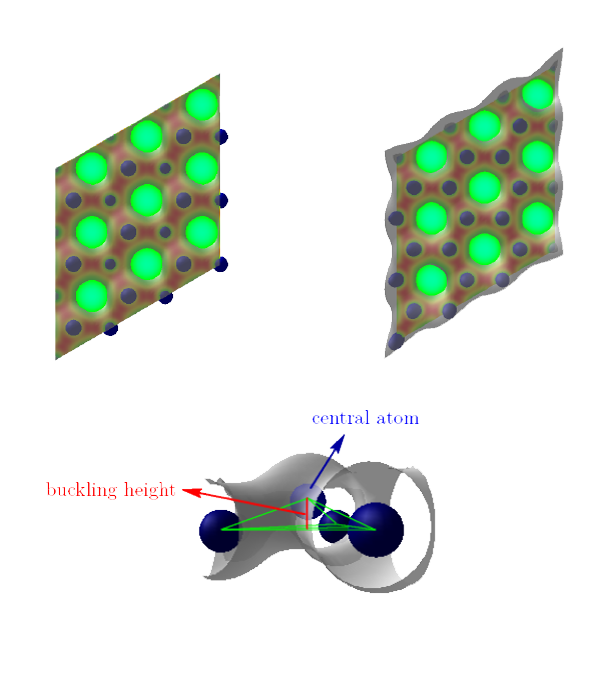Hossein M. Shodja

The present work aims to provide an accurate description of the tensile behavior of the planar as well as low-buckled stanene and to capture their ideal strength in armchair (AC)- and zigzag (ZZ)-directions. For an accurate description of anisotropic response of such hyperelastic materials as stanene, consideration of a highly nonlinear constitutive model in which up to the fourth power of strains is incorporated is inevitable. By utilizing first principles calculations based on density functional theory (DFT), the second, third, fourth, and fifth order elastic moduli tensors corresponding to both planar and low-buckled states are obtained. Moreover, the morphology of the free-standing stanene such as bond length and lattice parameter is determined; for low-buckled stanene two additional parameters, namely, buckling height and dihedral angle are computed. The effects of uniaxial and biaxial loadings germane to AC- and ZZ-directions on the buckling height and dihedral angle are also studied. Scrutinization of the electronic charge distribution reveals the phenomenon of the formation of necking in the Sn-Sn bonds under large uniaxial extension along the AC-direction. Moreover, the transformation of sp3 hybridized orbitals to sp2 hybridized orbitals is examined and confirmed through consideration of the structural geometries of the atomic bond angles.

DFT calculations of (a) buckled equilibrium configuration, (b) planar equilibrium configuration, and (c) trigonal prism formed due to the sp3 hybridized orbital in buckled configuration of stanene.
Stanene, Nonlinear continuum, Morphology, Elastic moduli tensorsIdeal strength, Ab-initio